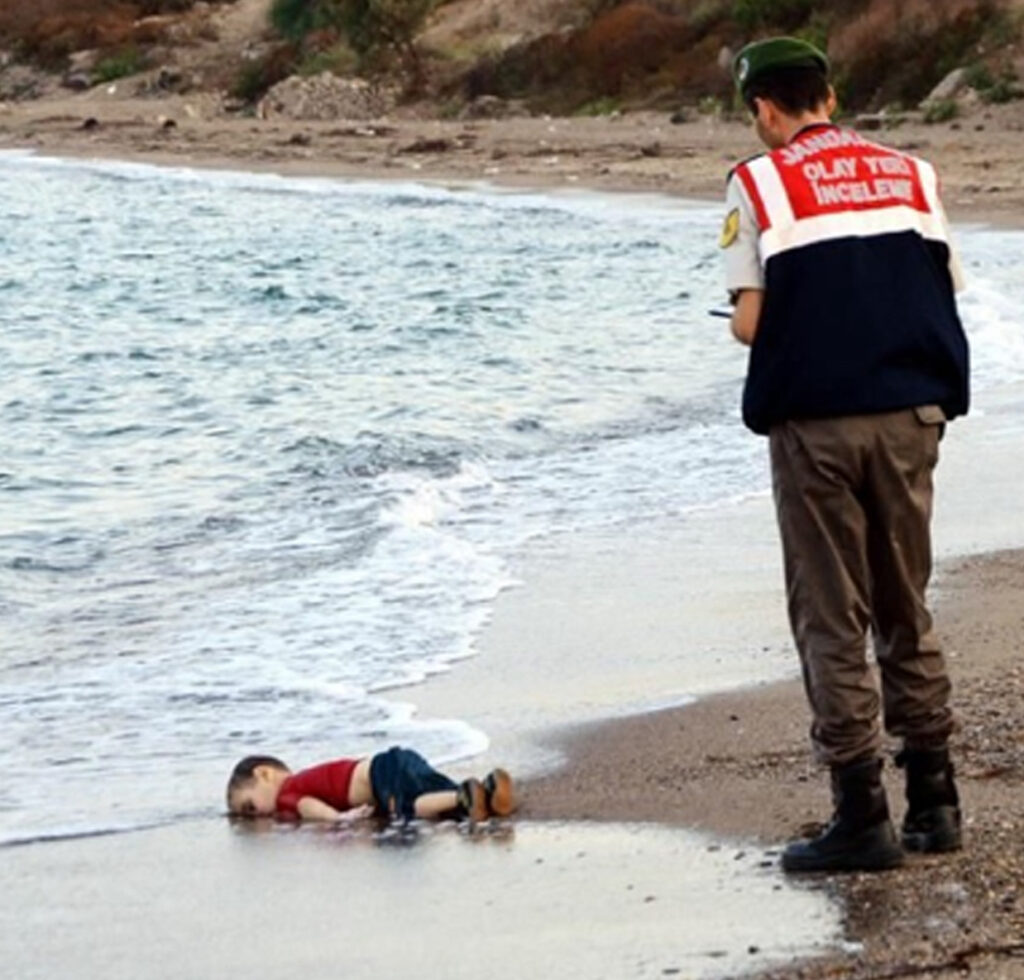Trigger Warning: Graphic Images
Photos depicting humanitarian crises have been prevalent in my life for as long as I can remember. I see them on fundraisers, news articles, advertisements, videos, or just about anywhere. I have always grappled with the concept of why these events are commercialized into mere images that hope for action.
Nicolas Jimenez, the director of photography at Le Monde comments that “until you’ve shown this photograph, you haven’t shown the reality of this crisis” (Fehrenbach, et al., 2015). The need for “proof” of humanitarian crises coincides with the idea that we must “visually represent children in ways that show they are worth saving” to British, European, and North American populations (Fehrenbach, et al., 2015).
But who is worth saving?

“It was the way he lay: asleep, terminal, so profoundly sad – as if by lying in supplication before the waves that killed him, he was asking for a replay, with a different outcome this time; and his socks and little shoes told us he was ready to try life again. But his cheek on the soft sand whispered otherwise, it made us choke. Shamed and disgraced, the world wept before the body of this little boy” (Graan, 2016).
The Syrian refugee pictured above is perceived to be “more European” which helped spark global outrage while a similar image of multiple African children did not foster any media attention (Fehrenbach, et al., 2015). Global inequalities like this are “characterized by two essential fault lines: inequality in the distribution of income, material wealth and political power, and in the military means to assert and defend them” (Graan, 2016). So if global inequalities are created through distributions of wealth and power maintained by militant ideologies, why doesn’t public outrage fueled by humanitarian photography help shift the distribution of powers?
We can gain insight into this question by looking at how art can support these unequal distributions of power. “The arts sector itself is unequal,” and whoever “has access to skills, resources, networks, and cultural infrastructure often determines who creates and distributes art” (Graan, 2016).
If we reframe this sentence into the context of wealth and power in global inequality, it looks something like this: Whoever has access to skills, resources, networks, and financial infrastructure often determines who has wealth and distributes power.
So how do we make a more equitable and accessible way to access our financial systems to help empower a larger global community that embodies both those who already have access to financial power and those who don’t?
References:
Fehrenbach, H., & Rodogno, D. (2015). A horrific photo of a drowned Syrian child: Humanitarian photography and NGO media strategies in historical perspective. International Review of the Red Cross, 97(900), 1121–1155. doi:10.1017/S1816383116000369
ISSC, IDS, and UNESCO. (2016). Challenging Inequalities: Pathways to a Just World. World Social Science Report 2016. doi:10.54678/qtok7532




